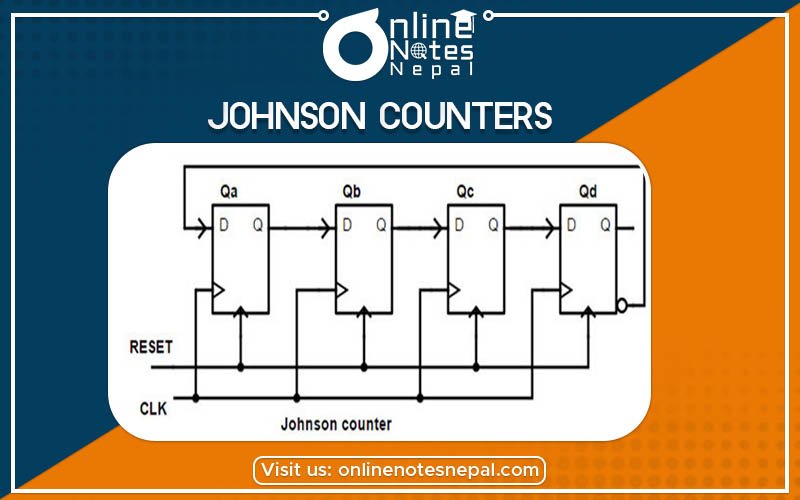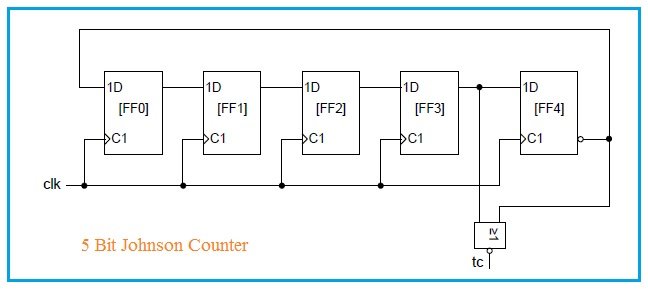Published by: Nuru
Published date: 22 Jun 2021

Johnson counters are the other type of shift register counters and are the variation of the ring counters. These are known as the twisted ring counters. The output from the last flip flop is inverted. It is again fed back as an input to the first. For this phenomenon, we can also name it as the Inverse Feedback Counter. An n-stage Johnson counter provides a count sequence of length 2n. This is because; we can consider it as the mod- 2n counter.
Johnson ring counter is used to count the data in a continuous loop. The Johnson counter has the same number of a flip flop but it can count twice the number of states the ring counter can count. Johnson counter is just the compliment of the basic ring counter.
There is an obvious disadvantage of the twisted ring counter. That is, that the maximum states of it are not fully put to use. There is the use of only eight of the sixteen states. We must initially force it into a valid state in the count sequence. This is important because it operates on a subset of the available number of the states. Otherwise, the absolute sequence is not followed.
There are also some advantages of the twisted ring counter as well. Although they have the same number of flip- flops they can count twice the number of states than the normal ring counters. It is also a self- decoding circuit.

Fig: 5- bit Johnson Counter
The above-given figure is of a 5- bit Johnson Counter.
